4
Extreme States of Plasmas: High-Energy Density Systems
HIGH ENERGY DENSITY PLASMAS, INERTIAL CONFINEMENT FUSION, AND WARM DENSE MATTER
On the surface of Earth, we live at a pressure of 1 atm. In terms of energy, 1 atm corresponds to about 105 J/m3 or about 0.03 eV per molecule of air. In the types of atmospheric pressure plasmas that are used for sterilizing surfaces for biomedical applications, the electrons can have high energies (3-4 eV) compared to the gas, but the fractional ionization is small, and so the energy density of the system remains small. In arcs, this energy density may rise to 0.5 or 1 eV per molecule, but even these energies are relatively low—low enough that atoms and molecules in plasmas having these energies still interact by forces determined by the electrons orbiting in the outer shells around nuclei. At these low energies, matter predominantly interacts chemically through the breaking and making of bonds facilitated by orbital electrons. Plasma chemistry uses the more energetic electrons to create excited states and radicals to selectively speed chemistry. However only a small fraction of the ordinary matter in the universe exists at the low energy densities that are experienced on Earth.
Most of ordinary matter in galaxies is in a high energy density (HED) state. Stellar interiors, planetary interiors, and supernovae can all be classified as HED matter, where the material energy density is >1011 J/m3, (or, equivalently, at a pressure of >1 million atmospheres (1 Mbar)). At these high energy densities, all matter has been ionized and all molecules dissociated. The interactions in HED matter are between highly ionized ions, the deep inner shell electrons that may remain bound to the atoms, the free electrons that have been liberated, and the
photons the plasma produces. This definition of HED is not fixed. High energy density physics, HEDP, begins to appear in materials at about 1 Mbar pressure. The plasma regime now known as “warm dense matter” (WDM) approximately covers the range of matter having energy densities well above those of typically industrial plasmas and reaching the lower bounds of HED plasmas. As more is learned about the dynamics of HED systems, new ways of describing that behavior have been proposed—organized complexity, systems far from equilibrium, self-organized structures, and material controlled and manipulated via intense fields—however, these are all systems at HED, as shown in Figure 4.1.
Inertial Confinement Fusion (ICF) is that field in which matter is compressed to high energy densities in an effort to controllably initiate fusion reactions in the laboratory. Many methods have been proposed to accomplish ICF in the laboratory. The two primary methods are compressing pellets of frozen deuterium and
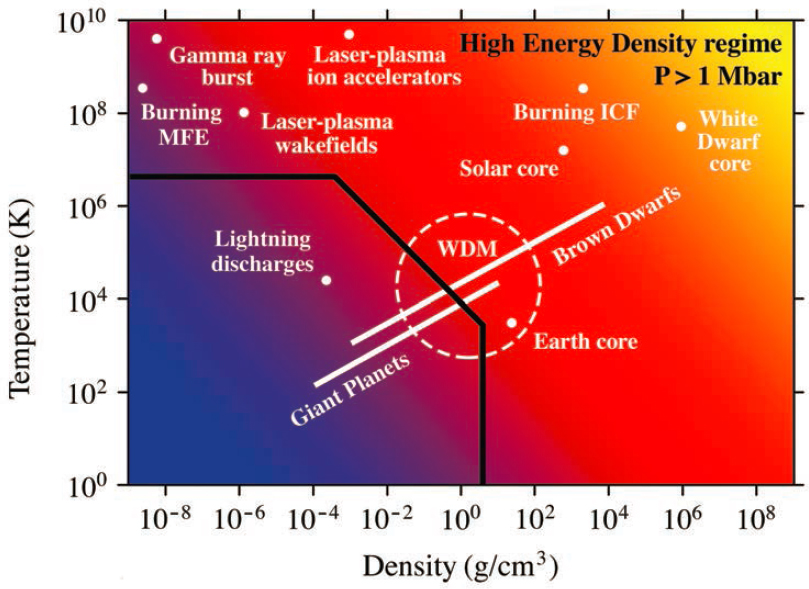
tritium (D-T) targets (or capsules) using ns pulsed lasers, and compressing targets using the plasma forces enabled by pulsed power. ICF is considered to be part of HEDP because for most of the duration of an ICF implosion, the ablators and the D-T core are in the HED regime. Indeed, most HED studies began as support for (and were supported by) ICF needs. While the three fields have historically, and will remain, closely linked, HED, WDM, and ICF are now three independent and flourishing branches of plasma physics.
High energy density plasma physics is also closely linked to other branches of plasma physics. At HED pressures, researchers can study laboratory fusion, create intense X-ray sources, and measure the intrinsic properties of materials at extreme conditions (such as density, strength, opacity, and equation-of-state—the relation between pressure, density and temperature) that are critical to astrophysical systems (such as the Sun and stars, supernovae, giant planets, and exoplanets) and necessary for stewardship of our nuclear deterrent. For example, the plasma property of opacity (the transmission and absorption of radiation) is important across all plasma regimes, but is particularly important in the HED regime as radiation is a dominant form of power transfer. Precise knowledge of opacity is critical to astrophysics, ICF and stockpile stewardship. Fundamental AMO (atomic, molecular and optical) physics data for molecules, atoms, and ions, such as energy levels, collisional-radiative rates, spectral line shapes, equations-of-state, and transport coefficients, are essential for understanding and analysis of all fields of plasma physics; and particularly important to understanding of radiation transport and ionization kinetics in HED physics. The need for this data, which is difficult to experimentally measure, has led to the development of sophisticated computational tools. Continued development of these computational tools is essential to furthering HED physics.
Plasma physics in the HED regime is also important to the field of quantum materials—systems in which interactions between atoms are dominated by quantum effects. New experimental and computational capabilities developed at HED science facilities can tune conditions to produce new phases of materials and preserve metastable states with enhanced properties, both near and far from equilibrium. The realm of quantum materials had previously been limited to low temperatures, limiting the breadth of quantum phenomena that can be investigated and exploited. In the past few years, however, a new generation of HED capabilities has enabled the controlled manipulation of pressure, temperature, composition, and magnetic fields (P-T-X-H) as well as time, enabling development of revolutionary quantum materials. Controlled Mbar (100 GPa or 1 million atmospheres) to Gbar (1 billion atmospheres) pressures enable up to a 1000-fold compression of materials, providing precision control of inter-atomic distances and thus overlap of quantum orbitals. Dynamic compression can now control the thermodynamic path, states, and processes to still higher
(e.g., atomic scale) pressures. These capabilities have crossed into a new frontier of quantum HED matter, one that can leverage quantum properties of materials at high temperature.
The status of ICF and HED was summarized in Plasma Science: Advancing Knowledge in the National Interest1 (hereafter known as the “Plasma 2010 report”). In this report, there was great optimism for achieving ICF ignition through laser-driven indirect drive (LID) on the National Ignition Facility (NIF) at Lawrence Livermore National Laboratory (LLNL). It was recognized that shock timing and symmetry would be challenging, and it was anticipated that laser-plasma instabilities would add substantial uncertainties to predicted ignition scenarios. However, it was believed that gas-filled hohlraums would mitigate laser-plasma instabilities and allow for controlled symmetry, and that implosions could be performed with the available laser energy. The option of laser-driven direct drive (LDD) for ICF, primarily investigated at the Laboratory for Laser Energetics (LLE) using the Omega laser facility, and Naval Research Laboratory (NRL), was not specifically addressed. Laser-plasma instabilities was expected to be a significant problem for only laser beams interacting with hohlraums. The ignition challenges for laser-driven direct drive were seen as symmetry, laser-seeded hydrodynamic instabilities, and shock timing (very similar to LID). The idea of direct magnetic drive, currently under investigation at Sandia National Laboratories (SNL), was not yet developed at the time of the Plasma 2010 report. In spite of its more recent development, indirect magnetic drive at SNL had achieved high neutron yields in Z-pinch driven wire-array hohlraums (1013 neutrons from D-D filled targets, which would give ~1015 neutrons for a D-T filled target). Direct magnetic drive was seen as a possible alternative to LID, especially as a neutron source.
Shortly before the Plasma 2010 report, HED science had been the topic of a consensus study report (Frontiers in High Energy Density Science, 2003)2 with emphasis on the requirements for stockpile stewardship. In order to fulfill those stockpile stewardship goals, the Plasma 2010 report listed the following requirements and benefits:
- Accurate understanding of material properties in a wide range of pressure and densities;
- Well-diagnosed experiments for validating codes covering solid-to-WDM-to-weapon-relevant conditions;
___________________
1 National Research Council, 2007, Plasma Science: Advancing Knowledge in the National Interest, The National Academies Press, Washington, DC, https://doi.org/10.17226/11960.
2 National Research Council, 2003, Frontiers in High Energy Density Physics: The X-Games of Contemporary Science, The National Academies Press, Washington, DC, https://doi.org/10.17226/10544.
- Large-scale 3-dimensional simulations;
- Validating codes through simulations of igniting ICF capsules, and
- Potential to engage new workforce participants for stockpile stewardship due to the scientific challenges of ICF.
Stockpile stewardship falls within the mission of the National Nuclear Security Agency (NNSA) which supports much of the HED investigations performed at national laboratories. While basic science is not the mission of the agency, NNSA in 1998 had established the Stewardship Sciences Academic Alliances (SSAA) and Stewardship Sciences Graduate Fellowship (SSGF) programs. It was predicted in the Plasma 2010 report that use and applicability of advanced computer simulations of HED plasmas would need to expand to meet both ICF and stockpile stewardship goals. The expanded capabilities were expected to include, for example, density functional theory calculations of equations of state, and extending particle-in-cell (PIC) codes to larger volumes and longer time to study laser-plasma interactions (LPIs) and interpenetrating plasmas. Investigations of coupled radiation and hydrodynamics in HED regimes were seen as relevant to astrophysical systems, particularly radiation driven shocks, radiating shocks, jets, and ablation by radiation. Atomic physics in the HED regime was expected to significantly affect the understanding of opacity, and spectroscopy from igniting cores was anticipated to enable the exploration of new regimes.
The commissioning of the Linac Coherent Light Source (LCLS) was expected to be especially productive and exciting to the WDM field, with a short pulse, monoenergetic X-ray probe coupled to a laser driver. The Plasma 2010 report particularly emphasized the importance of encouraging strong outside users’ programs, such as that at LLE, at other national facilities. It was anticipated that ion beam drivers would be very useful for creating WDM conditions. The WDM field was poised to begin relevant work on radiative properties in intense magnetic fields, particularly relevant to white dwarf conditions.
HED PHYSICS—DYNAMIC WITH BROAD IMPACT
The applications of HED science span a tremendous range. In the NNSA 2018 Stockpile Stewardship and Management Plan,3 referred to as the SSMP report, the challenges and strategy for the science program for 2018-2025 includes HED science and the importance of understanding materials and conditions in the HED regime for stockpile stewardship. For example, the Z-machine at SNL has been used to
___________________
3 U.S. Department of Energy, “Stockpile Stewardship and Management Plan (SSMP),” https://www.energy.gov/nnsa/downloads/stockpile-stewardship-and-management-plan-ssmp.
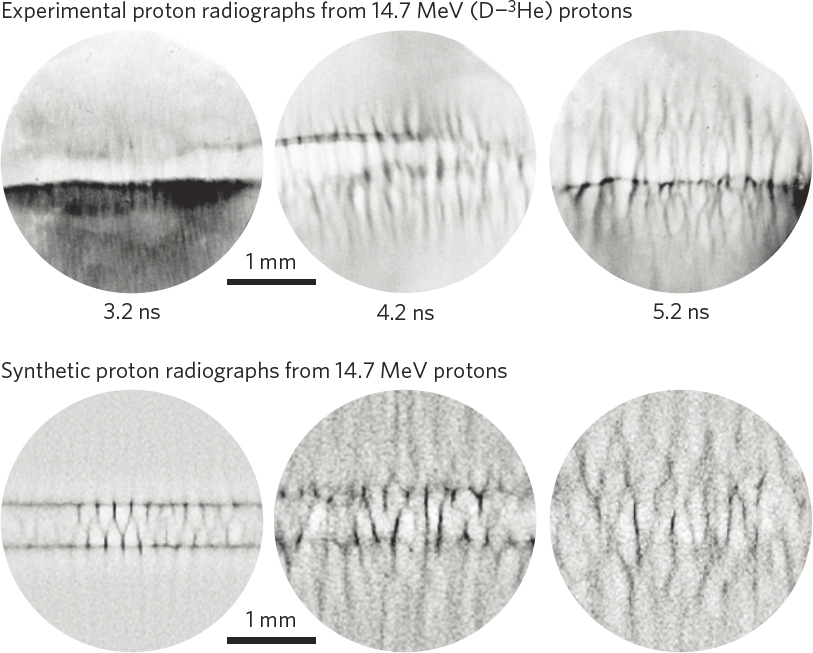
evaluate plutonium aging in weapons by comparing properties of fresh plutonium with those of more than 50-year-old plutonium extracted from the nation’s weapons stockpile. These are exceedingly important and necessary studies that can only be accomplished using HED national facilities. At the other extreme, understanding plasma opacity through HED experiments can contribute to improved industrial designs for extreme ultra-violet (EUV) plasma sources for lithography required for the development of microprocessors having ever smaller features.
The study of plasma physics in the HED regime is closely connected to other branches of physics and can help address many fundamental questions relevant to the broader community. These related fields and questions include:
- Astrophysics: How are hydrodynamic shocks and instabilities affected by radiation? What nonlinear process occur when plasmas collide? HED facilities with either high-energy laser or pulsed power drivers can create conditions similar to those in astrophysical systems, and where relevant hydrodynamic problems can be studied in a controlled environment from known initial conditions. Type-II supernova explosions are Rayleigh-Taylor unstable and stellar wind flowing around a planetary magnetosphere is subject to the Kelvin Helmholtz instability, both of which can be studied in HED facilities to advance astrophysics when applying appropriate scaling parameters. There is an opportunity for astrophysically relevant experiments to investigate the interplay of magnetic fields on hydrodynamics flows, such as the amplification of galactic magnetic fields, and how radiation affects the growth of structures in core-collapse red supergiant supernova explosions. The data produced by HED experiments can aid in validating and guiding astrophysical modeling and theory. An example of such HED data is shown in Figure 4.2. In this experiment on the Omega laser, a collisionless plasma is generated by laser ablation. Where the plasmas interact, the Weibel hydrodynamic instability seeds the creation of magnetic fields, which are detected by the deflection of protons generated by an imploding ICF capsule. The plasma and proton deflections were simulated in three dimensions using a particle-in-cell code.
- Material science: What are material properties at the pressures and densities present in the interiors of planets, or white dwarfs? These are critical issues to understanding the formation and evolution of these astrophysical objects, yet their properties cannot be directly observed. In this pressure regime, which combines classical solid state and plasma physics, first-principles material properties calculations are required. These calculations typically use density functional theory with molecular dynamics that should be benchmarked with experiments. The technique of ramp-compression, in which pressure is gradually increased to minimize heating of the material, has been used on NIF and Z to study samples in the solid state at pressures greater than 10 Mbar, comparable to the interior and formative conditions of terrestrial planets. Dense plasma states are being experimentally generated at even higher pressures, which are difficult to achieve in solids, matching the interior conditions of gas giant planets, non-terrestrial-like exoplanets, and the outer regions of brown dwarfs. The insulator-metal transition in dense
-
fluid deuterium at pressures up to 3-6 Mbar has been experimentally measured, providing benchmarks for theoretical calculations used to construct planetary models.
- Nuclear physics: How are nuclear reactions affected by dense plasmas? Nuclear physics has traditionally been studied in the laboratory using accelerator-beam techniques. In spite of their great value, such techniques may not address issues relevant to astrophysics and ICF, where all nuclear reactions occur in a plasma environment. This class of plasma physics relevant nuclear reactions can be explored using modern HED experimental capabilities. Light-ion fusion reactions are an important topic to both basic nuclear physics and astrophysics. For example, recent studies of T+T fusion reactions, revealed an unexpected dependence of the neutron spectrum on plasma temperature even though the plasma temperature is orders of magnitude less than the nuclear energies involved. This discovery is potentially important for the many nuclear reactions that occur in in plasmas such as those in stellar interiors and supernovae. Similar studies are now being performed on 3He+3He, the last step of the main proton-proton chain. In a plasma, the charged particle fusion reaction rate is enhanced by electron screening of the Coulomb barrier. In stellar cores, the screening effect can enhance some reaction rates by tens of percent. In a high-temperature plasma environment, plasma-nuclear interactions can populate excited nuclear states through processes including nuclear excitation by electron capture and by electronic transitions. Understanding the coupling of nuclear states to the plasma is therefore important for understanding nucleosynthesis, particularly of the heavy elements, in astrophysical environments.
- Atomic physics: Atomic physics and HEDP have a strong synergistic relationship. The product of atomic physics investigations is absolutely essential to the analysis of HED experiments and the development of HED computational models. The validation of atomic physics in these regimes is best performed by the controllable conditions possible in HED experiments. At the heart of this synergistic relation is the question what atomic physics in HED regimes is not treated properly or is missing? The ionization potential of ions in a dense, strongly coupled plasma is lowered, due to the interaction with the surrounding plasma (continuum lowering). This continuum lowering is intimately connected to the equation of state and so an accurate treatment is crucial for most HED and ICF applications. This is particularly the case for plasma mixtures and conditions having severe gradients in plasma properties. The standard plasma density-dependent analytical models for continuum lowering are inadequate to describe solid-
- Opacities in solar and space physics and the semiconductor industry: What new experimental techniques and new atomic and radiation physics modeling are needed for solar opacity measurements in the laboratory? Just as opacities are critical to HED physics, opacities are critical to the investigation of any plasma dominated by radiation transport. That is particularly true for stellar physics where radiation transport is the dominant form of power transfer from the interior to the surface of a star. Opacity experiments are challenging to perform because they require precise understanding of the laboratory drive and equation of state in addition to high precision spectroscopy and control over experimental conditions. As such, techniques developed and measurements made of opacities in HED physics are critical to a wide range of fields, including solar and stellar physics, astrophysics and stockpile stewardship. (See Figure 4.3.) This also includes the high intensity EUV sources used in the semiconductor industry for lithography.
- Quantum materials: What new materials might be achievable in the HED regime? The new science frontier of novel quantum HED structures combines quantitative cutting-edge experiments, theory, and ab initio simulations. These capabilities enable exploration of this extreme quantum regime with the prospect of a new types of synthesis and recovery of novel quantum materials. In the HED regime, theory now predicts new and exotic quantum states. There is a growing list of predictions for such behavior in everyday materials (e.g., Al; see Figure 4.4) with potential energy applications. New HED laboratory capabilities now provide the first platforms on which controlled and calibrated laboratory-based experiments can be performed into the atomic pressure range, where the quantum shell structure of atoms is destroyed. In addition, novel hydrogen-rich superconductors have been discovered at high (few megabar) pressures with critical temperatures at or above room temperature. The combination of high pressure and hydrogen is predicted to produce a broad range of such superconductors.
density plasmas at HED temperatures. For example, measurements of continuum lowering for both single-species and mixture plasmas—the same ion but in different materials at different densities—performed in free electron laser isochoric-heating experiments have highlighted the critical need for new methods and theories to compute equations of state in strongly coupled hot dense plasmas. X-ray spectroscopy is another synergistic atomic physics-HED physics topic. There has been a recent surge of experimental techniques to diagnose HED and ICF plasmas using X rays, which has already advanced our understanding of both hohlraum and capsule physics.
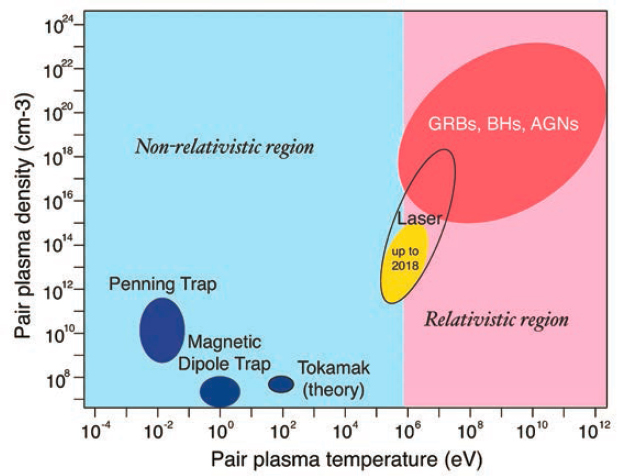
IGNITION, INERTIAL FUSION ENERGY, AND STOCKPILE STEWARDSHIP
Inertial fusion energy (IFE), the commercial production of electricity from inertial confinement fusion, offers the prospect of a nearly carbon-free energy source with a virtually unlimited supply of fuel, as with magnetic fusion energy. IFE has been a long-term goal of ICF programs for decades, and several conceptual studies have been performed based on anticipated laser requirements and fuel management schemes. However, the unexpected challenges in achieving ICF ignition has tempered and delayed discussion of IFE systems until that critical demonstration of ignition occurs.
The prospects for IFE were examined in detail in the 2013 NRC report An Assessment of the Prospects for Inertial Fusion Energy.4 The report recommended a
___________________
4 National Research Council. 2013. An Assessment of the Prospects for Inertial Fusion Energy. Washington, DC: The National Academies Press. https://doi.org/10.17226/18289.
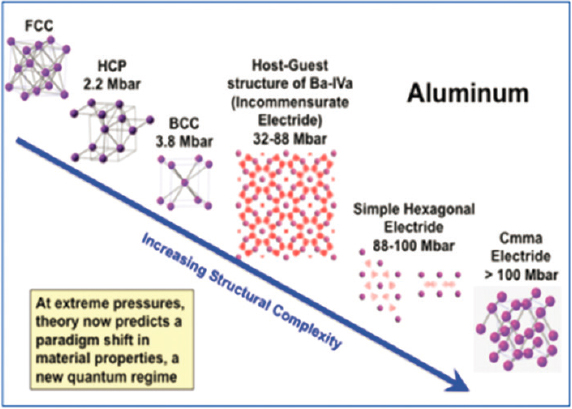
series of milestones to be used in a roadmap to assist in planning the recommended national IFE program, leading to a demonstration plant for producing net usable energy. The first milestone is ignition. Achieving ignition is a prerequisite before serious plans for a demonstration plant can be considered. (See Figure 4.5.) Ignition will provide data and insights that will be required for future decisions on whether to pursue IFE. For example, achieving this milestone will clearly establish the energy requirements for ignition and possible capsule architectures that can be used. The report concluded that various target designs and driver approaches had both potential advantages and uncertainty, and that the best driver approach was not yet established. IFE will require target designs and drivers that can operate at high repetition rates (5-20 Hz) while delivering a net energy gain of ~10 per pulse. (Gain is the ratio of energy produced by fusion reactions compared to the energy used to initiate the fusion reactions. In this context, energy gain is fusion energy compared to the total facility energy.) These capabilities are well beyond the capabilities of existing ICF drivers which have pulse repetition rates from 1 per hour to 1 per day. Recently LLNL delivered a subscale version of an IFE laser concept, for the world’s first 10-Hz PW laser system. This laser is supporting HED and discovery
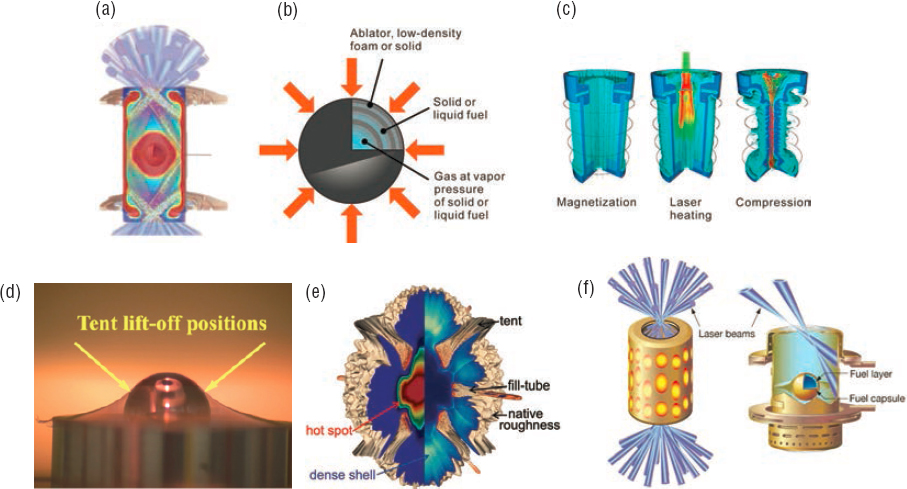
science experiments at the ELI-Beamline Facility in the Czech Republic. This investment ($53 million) by the European Union in laser technology developed in the United States illustrates how investments in ICF and IFE laser technology enabled advances in other areas.
There are still clearly challenges in achieving ignition and challenges in developing driver technologies that would be required for an IFE power plant. Even with those challenges, a modest IFE program in the United States would strategically leverage the significant investments made, and to be made, in the mainline HED program. The United States still leads the world in ICF research, high
repetition-rate lasers, and pulsed power drivers, all of which are prerequisites for an IFE program. Maintaining a modest IFE program would open the way for partnering with the private sector as is now occurring in magnetic fusion energy (MFE). Industrial engagement has been very helpful for MFE. Such engagement for IFE would help build the knowledge base for IFE and, more broadly enhance the HED infrastructure. Pursuing ICF ignition is an extremely important goal, even without the current prospect of commercial energy. The pursuit of ICF ignition enables plasma studies at conditions relevant for nuclear weapons stockpile stewardship and other HED science applications.
The importance of HED science for the stewardship of the nation’s nuclear stockpile was clearly stated in the SSMP report. In order to fulfill its stewardship mission, NNSA listed strategic objectives of the Science Program. Specific objectives relevant to HED science for stockpile stewardship include:
- Enhanced capabilities will need to be developed to recreate more weapon-like conditions in experimental facilities;
- Focused experiments such as material characterization at HED conditions will be needed to support annual assessments;
- HED conditions will be needed to understand the impacts on performance of aging and of new materials and processes;
- Promote academic alliances to recruit and train new generations of scientists; and
- Evaluating the HED plasma environment requires innovative, sophisticated diagnostics.
ICF ignition and gain, important for the future of inertial fusion energy, are also important for stockpile stewardship. The degree of relevance to stockpile stewardship is to some degree correlated with the fusion energy yield. With higher energy yield from an ICF capsule, one can gain access to more weapons-relevant physics. For example, the following physics follows from achieving a given fusion yield.
- Yield = 0.01 MJ: Interplay of thermonuclear fusion burn and mix, nuclear physics data (reaction-in-flight, fission, and radiochemistry). This yield is currently available on the NIF which can provide a maximum yield of ~0.05 MJ.
- Yield = 0.1 MJ: Transport of charged particles in plasmas, threshold for fusion-fission physics.
- Yield ≈ a few MJ: Threshold for enabling complex mix physics studies, robust radiation and charged particle transport, robust fusion-fission experiments.
- Yield = 20-30 MJ: Higher fidelity versions of the above experiments are possible, neutron sources for materials and environmental studies
- Yield = 500 MJ: Use of fusion targets to drive complex experiments, use of fusion targets for material properties (EOS, opacity) research, combined neutron and X-ray environments for outputs and effects studies.
The training of scientists through the study of HED physics is an excellent contribution to the STEM workforce. These individuals gain fundamental, interdisciplinary knowledge of extreme states of matter using the most advanced technical systems that exist. For that reason alone, research at universities in HED should be strongly supported. However, the investigation of HED physics at universities also serves a strategic and critical role for national security. Science-based stockpile stewardship requires a uniquely trained and mentored workforce, which is best produced by actually researching HED physics, computationally and experimentally. It is difficult to imagine maintaining the technical expertise required for science-based stockpile stewardship in the absence of university programs in HED physics. To help advance education in the field of HED, and to increase access to HED resources for scientists in the field, the NNSA Stewardship Science Academic Alliances (SSAA) Centers of Excellence were started in the late 1990s. The first was the Institute of Shock Physics at Washington State University, founded in 1997. The funding of these Centers increased after the launch of the NNSA-DOE Office of Science Joint Program in HED Laboratory Plasmas in 2007. Subsequent studies have commended these Centers and recommended increased funding for them. Currently, nine Centers are funded with five focused on HED physics. Center funding has recently been flat with funding per Center decreasing from (typically) $2.5 million per year to $1 million per year, to enable more Centers to be funded. However, a stagnant funding environment has the potential to reduce the number of new facilities, given that operating existing centers is likely to be less expensive than creating a new center, and the overall number of students trained. The viability of stockpile stewardship rests on its scientific workforce, and the Centers are critical to providing that workforce.
Individual investigator support is also extremely important in supporting university research in HED and advancing the training of scientists in HED physics. This need is supported in part by the DOE Office of Science (SC) Fusion Energy Sciences (FES) and the DOE/NNSA/DP Joint Program in High-Energy-Density laboratory plasmas (HEDLP). This program, started in FY2007, remains a major source of funding for individual investigator work in HED. Individual awards range from $50,000 to $250,000 per year for grants from 1 to 3 years. In 2018, the program awarded 26 grants, totaling $13.8 million. However, this funding has been at risk in recent years. The program should be strongly supported as a significant complement to the larger HEDP Centers.
In addition to HEDLP, federal agencies have supported university research in HED science and closely related disciplines, including DOE-NNSA, DOE-SC, NSF, AFOSR, ONR, and DTRA. The major facilities in the NNSA ICF program (NIF, Omega, Z) have university user programs, while LaserNetUS network (launched in 2018 with DOE-SC support) is dedicated to providing “midscale” facility access to the HED science community. These efforts have enabled strong university collaborations and significant fundamental scientific discoveries, including helping to develop the future technical workforce. However, there remain significant concerns regarding workforce development. Universities are not provided a sufficient level of resources and attention in several technical areas relevant to ICF and HED physics, making it difficult to provide for future workforce needs, particularly where there are citizenship requirements. One such area is pulsed power-driven HED science and technology.
HED AND ICF ACHIEVEMENTS
In the past decade, the fields of HED physics and ICF have flourished. The following sections summarize some of these accomplishments.
Laser-Driven ICF
ICF ignition designs, whether driven by X rays, magnetized liners, or directly by lasers, attempt to compress D-T fuel to high enough densities to ignite fusion reactions. The D-T fuel is initially heated by the work done in compressing the fuel. Ignition, in principle, is accomplished by assembling D-T fuel in a small, dense, hot region at the center of the target (“hot spot”), which is surrounded by dense, cold, D-T fuel. After ignition of the hot spot, a burn wave of fusion reactions propagates into the cold fuel, greatly increasing the yield. During fusion reactions, energetic helium nuclei (α-particles) are produced. Two threshold definitions are common in ICF: (1) A burning plasma is achieved when the energy deposition by the fusion-produced α-particles contributes more than 50 percent of the heating of the fuel in a capsule; and (2) Ignition occurs when the α-energy deposited in the hot spot is equal to the energy losses due to emitted X rays and electron heat conduction.
The laser energy delivered by NIF to the target is at its maximum achievable level with the present design. This new capability brought research for laser indirect drive ICF to scales and conditions for ignition. (In laser indirect drive, LID, laser illumination of a small cavity holding the target, the hohlraum, produces short wavelength radiation that heats the target.) However, currently laser plasma instabilities and hydrodynamic instabilities are limiting indirect drive target performance. (See Figure 4.6.) LPIs occur when the lasers interact with the plasma inside
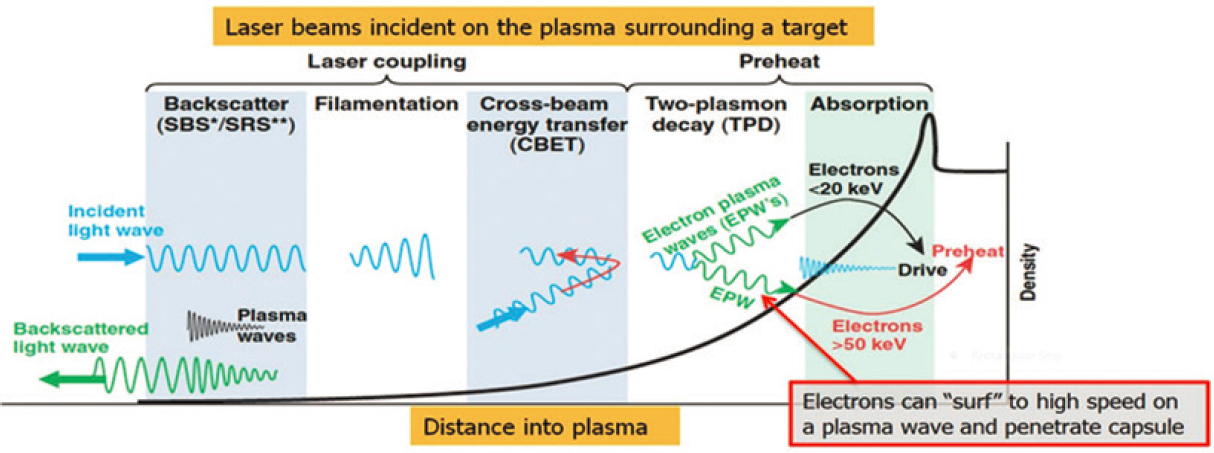
the hohlraum, consisting of a combination of low atomic weight (low-Z) atoms ablated from the hydrocarbon capsule containing the D-T fuel and high atomic weight atoms ablated from the hohlraum, typically coated with gold. Laser-plasma instabilities of various kinds can change the direction of laser beams (affecting symmetry of illumination of the target), transfer energy into electrons rather than ions (making the energy transfer less efficient and preheating the low-Z capsule), and reflect the laser energy back up the laser amplification chain (possibly damaging optics).
The laser direct drive (LDD) approach to ICF also has the potential to provide the high fusion yield required both for stockpile stewardship and for IFE. In LDD approaches laser beams are focused onto the surface of the target, possibly seeding hydrodynamic instabilities. LDD thus requires particularly uniform illumination to prevent instabilities. Both hydrodynamic and laser-plasma instabilities similar to those occurring with indirectly driven capsules are expected as laser direct drive targets approach ignition. For example, complex hydrodynamic flows similar to those simulated for the indirectly driven capsule are predicted to occur for directly driven capsules. Although within directly driven targets the plasma consists of only low-Z atoms, laser-plasma instabilities can still distort the incoming laser beams and produce high energy electrons which preheat the target. The main advantage of LDD is the higher coupling efficiency of laser energy into the kinetic energy of the shell (by a factor of 3 to 5 compared to LID). This higher efficiency results in less stringent ignition requirements for the maximum pressure at the hot-spot in the center of the target and by how much the shell of the target must be compressed. (This compression is measured by the convergence ratio, CR, the ratio of the hot spot radius to the initial capsule radius.) At LLE. where most direct-drive ICF implosions are performed, progress in diagnostics and modeling over the last decade have resulted in significant improvements in predicting the properties of a compressed target using hydrodynamic codes, enabling significant improvements in capsule performance.
Magnetically Driven ICF
In magnetically driven ICF, the inwardly pointing J × B forces that occur in, for example, high current discharges such as a z-pinch are used to compress a plasma to fusion densities. Some of the earliest concepts for laboratory fusion, dating from the 1940s, were magnetically driven. Unfortunately, due to challenges in overcoming instabilities, magnetically driven ICF fell out of favor. In fact, the field was not reviewed in the Plasma 2010 report, as there was little relevant research at the time. However, in the intervening years, a class of magnetized ICF known as magneto-inertial fusion has attracted more interest. At SNL’s Z-machine, integrated experiments using magnetized targets preheated by a kilojoule laser source
(“MagLIF”) have demonstrated significant neutron yields. The strong magnetic fields decrease the plasma density required to stop α-particles so that they heat the fuel more efficiently, reducing the convergence ratio required to produce fusion from a D-T target. Thus, the mix of cold ablator material into the fuel introduced in high-convergence, high velocity implosions (such as those in laser direct or indirect drive) may be mitigated. In addition to reducing the range of α-particles, the magnetic field reduces the thermal conductivity and keeps the fuel hot. The high efficiency of pulsed-power machines such as z-pinches makes them an attractive candidate for IFE drivers.
MagLIF and its targets, unlike the spherical targets in LDD, operate in a cylindrical geometry. The target D-T fuel is first magnetized by an external magnetic field and then preheated to about 500 eV by an external laser. Finally, the target liner is imploded by the high (26 MA) currents produced by the Z-machine, compressing the D-T fuel. Successful MagLIF experiments on the Z-machine showed significant thermonuclear yield in 2014 and helped invigorate research efforts in magnetized target fusion. In addition to SNL, the Alpha program in DOE’s ARPA-E has provided funding to universities to perform fundamental research applicable to MagLIF fusion as an alternative energy concept.
User Access to HED Facilities
Since the Plasma 2010 report, LLNL and SNL have established external user programs whereby scientists outside the NNSA laboratories are granted access to the NIF and Z-machine HED facilities. The programs offer opportunities for a broad range of users to perform experiments in HED science, including laboratory astrophysics, planetary science, high pressure materials science, unique regimes of plasma physics, nuclear science, and particle acceleration. These regimes are found in planets, stars, galaxies, supernova dynamics, astrophysical shocks, and accreting massive black holes. Since the inception of the Z Fundamental Science Program (ZFSP), major discoveries have been made in the areas of matter at extreme conditions and laboratory astrophysics. As one example, researchers have been able to achieve very high pressure, high density conditions that are relevant to planetary interiors. Solid state samples are being studied at pressures matching the interior and formative conditions of terrestrial planets, and at even higher pressures to match the interior conditions of gas giant planets, exoplanets, and the outer regions of brown dwarfs. Other experiments have measured opacity at stellar interior conditions in the laboratory (e.g., the opacity of iron). These experiments, performed on the Z-machine, produced opacities higher than theoretically expected, showing that the standard opacity models used by astrophysicists may need to be revisited. Although these programs provide excellent opportunities for external users, the community would benefit from there being a lower barrier for entry and support
for the LLNL and SNL scientists who help external users navigate the system to gain access.
High Brightness Sources
The brightest free electron laser X-ray source, Linac Coherent Light Source (LCLS) at the SLAC National Accelerator Laboratory is enabling new investigations of HED plasmas. Studies using the Matter in Extreme Conditions (MEC) facility at LCLS have explored HED plasmas generated by long and short pulse lasers, using the femtosecond X-ray pulse from the LCLS. This has allowed, for example, investigations of warm dense matter structures and properties, nanometer-scale plasma features, dynamic phase transitions and lattice dislocations, and shock waves in materials. Diagnostics at the MEC allow direct measurements of material properties on each shot. (See Figure 4.7.) The MEC is a major DOE-FES investment in HED science and a major facility completely devoted to HED basic science.
Diagnostics and Simulations
A wealth of new results has emerged from ICF experiments over the past decade, enabled by diagnostics improvements, and have led to significant improvements in our scientific understanding. After the first set of ignition experiments on NIF (known as the National Ignition Campaign, NIC), it was recognized that hydrodynamic instabilities were degrading the quality of the implosions. Reducing instability growth (at the expense of hydrodynamic efficiency) improved target yield by an order of magnitude. The ability to model targets at high resolution in three dimensions has led to a better understanding of the impact of capsule “engineering features” such as fill tubes and mounts. By improving these features, target performance has also improved. Understanding the impact and control of the X-ray drive on the capsules has also improved. For example, the emerging field of plasma optics plays a role by using laser-plasma instabilities to create plasma gratings, in order to steer the laser beams in NIF hohlraum and improve capsule implosion symmetry. (See Figure 4.8.) Implementation of many lines of sight for neutron detectors has given a clearer picture of the symmetry of neutron production in the hot spot, with asymmetry in drive linked to motion in the hot spot.
These new diagnostic-enabled results have motivated a complementary improvement in our ability to analyze, simulate, and deal with unprecedented volumes of data. Increases in computer power combined with improved algorithms have considerably improved the ability of simulations to model plasma experiments. Higher fidelity simulations with more fundamental physics and better resolution have improved our understanding of the physics controlling the performance of
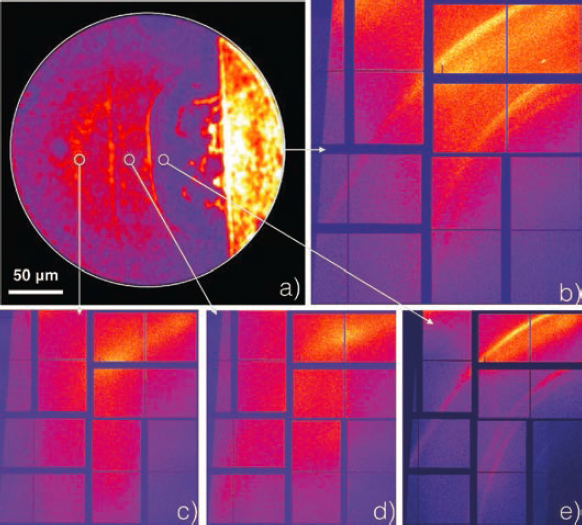
these experiments. For example, ICF simulations of indirect drive ignition targets and capsules can now include a broad range of perturbation sources such as surface imperfections, engineering features and drive asymmetries in a fully 3D geometry. These new capabilities have significantly improved the ability of simulations to match a suite of experimental observations across a range of targets. Simulations of direct drive targets and magnetically driven targets have also increased in fidelity and realism. The United States leads the field of ICF plasma simulations. This leadership has important implications for national security as well as future energy security and economic competitiveness.
Diagnostics on the major ICF facilities are proposed, prioritized, and scheduled (depending on funding) by the ICF National Diagnostic Leadership Group,
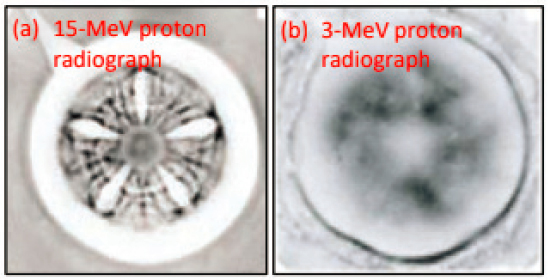
based on input from the ICF National Diagnostics Working Group. As described in the “Energy and Water Development Appropriations for 2011 Hearings,” the mission of the working group was to support the development of radiation hardened diagnostics for use on NIF after ignition was achieved. Its mission now encompasses diagnostics for the three major U.S. ICF facilities: NIF, LLE, and Z. NNSA sponsors workshops that are open to all technically qualified participants (the most recent was held in 2017, with 105 participants). Based on the outstanding results from diagnostics fielded in those three facilities over the last decade, this model works well. The National Diagnostic Working Group could be expanded to officially encompass diagnostic specific to HED, technology transfer to and from midscale facilities, and data analysis and data mining techniques.
Plasma Optics
Since the Plasma 2010 report, plasma optics has emerged fully as a field of research. Interactions of beams in plasmas have the potential to produce plasma-based optics that are capable of supporting much higher intensities and fluences than is possible in solids. Plasma mirrors, starting in the early 1990s, have been
used to improve the contrast of short pulses and as a final focusing mirror for short pulse systems. In the past decade, several other plasma components, while still in the nascent stages of development, have been successfully demonstrated in experiments: lenses, waveplates, q-plates (which transfer angular momentum of photons between spin and orbital angular momentum), beam-combiners, compressors, and amplifiers.
SCIENCE CHALLENGES IN HED AND ICF PHYSICS
There are many science challenges unique to HED and ICF physics. In particular, it is clear that fusion ignition remains a grand challenge. Initial indirectly driven ICF experiments on NIF were strongly affected by implosion asymmetries and perturbations. Significant improvements in target engineering reduced perturbations seeded by capsule roughness, bettered hohlraum design to reduce asymmetries driven by laser-plasma instabilities, and refined capsule design to reduce geometrically seeded asymmetries. The end result is that experiments on NIF achieved as much as a factor of three higher yield than that calculated without α-particle heating, near the threshold of a burning plasma. However, even with these successes, the cold fuel around the hot spot is not measured to be as dense nor as uniform as simulated, and laser-plasma instabilities remain a challenge that limit the maximum usable laser intensity. NNSA has a milestone for 2020 to identify and quantify the improvements needed to obtain ignition on the NIF, if it has not been achieved, and to determine the scaling to multimegajoule yields.
Ignition may represent the most visible challenge, but it is far from the only one. As the HED field evolves to address the fundamental questions listed above, other challenges will arise to address the needs for the next generation of facilities, requirements for diagnostics in completely new regimes, and advances in computational techniques. These challenges include:
- Further investigations into the astrophysical, opacity, and material science questions described above will require a new generation of drivers—lasers or pulsed power. Higher energy densities are needed to reach more relevant plasma regimes. These plasmas will need to be larger in spatial scale and more uniform to improve the quality of measurements.
- Investigating those same fundamental questions will also require the brightest possible X-ray sources coupled to high-resolution diagnostics capable of interrogating higher energy densities. The paradox is that in creating larger, more uniform plasmas at higher energy density with more energetic drivers, the currently available X-ray sources (such as the SNL Beamlet backlighter and NIF’s ARC petawatt laser) will be insufficient to diagnose density,
-
temperature, ionization, and other required plasma parameters. Brighter sources, more like that currently available at LCLS, will be required for diagnostics. The requirements for better diagnostic resolution also increase requirements for source brightness.
- Diagnosing exotic quantum materials likely means investigating the plasma conditions created by the highest intensity lasers at ever shorter time scales. Higher repetition rates (on the order of MHz proposed for LCLS II and a proposed upgrade to MEC) will achieve unprecedented precision and produced unprecedented amounts of data. Advances in computational capabilities for data mining and machine learning will be needed to deal with the large volumes of data produced.
- While the existing major facilities are expected to continue to produce scientific return for at least the next decade, planning for successor facilities (both laser driven and pulsed power driven, for both ICF and HED) has started. The construction of LCLS II is underway, and proposals to upgrade the MEC facility are in progress. To continue the United States lead in ICF will eventually require the next facility intended for high gain ICF to be designed and built. Given recent discoveries, whether pulsed power or laser driven, the current HED facilities and technologies are likely be inadequate to achieve high gain ICF. Developing the driver technology to meet this goal will require early investment in design and proof of principle prototyping. The lead time is long and postponing such fundamental science and technology investigations until a funding decision is made to construct the next facility would result in significant delays. A Next Generation Pulsed Power Facility (NGPPF) based on linear transformer driver technology is a leading candidate to replace today’s Z-machine. (See Figure 4.9.) Understanding the low-density plasmas in the anode-cathode gaps of large pulsed power machines is important not only for electrical power transmission in such a high gain facility, but also for target implosion dynamics and overall target performance. These investigations should be done now to prepare for the next generation of machine.
- Computations and fundamental data: Computational advances will certainly be necessary to design, diagnose, and understand HED and experiments. Precise, ab initio simulations of materials in the plasma state are required to predict material properties such as opacity and equations of state. These simulations will need to be validated by focused and perhaps dedicated experiments designed for validation. Kinetic effects, magnetic and electric fields, and other detailed physics models must be improved from the current approximations. These will require significant improvements in current computational capability. Given these validated codes, simulations of the response of an integrated system such as an
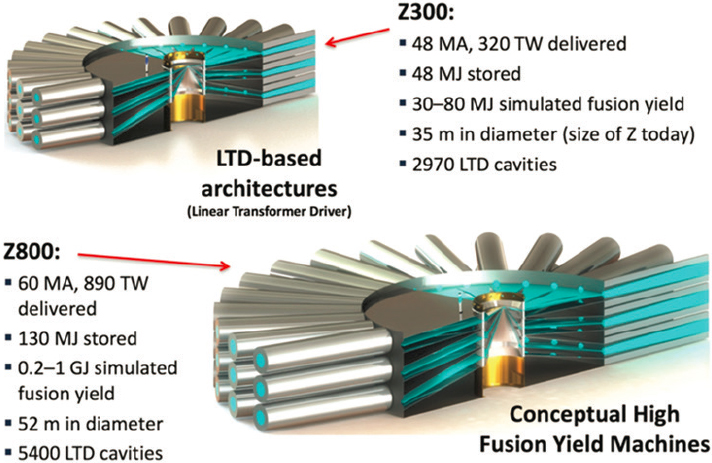
imploding ICF capsule, a supernova, or the interior of a giant planet will be possible.
These first-principles simulations will need fundamental data such as cross sections for electronic and nuclear interactions, opacities, transport coefficients and oscillator strengths. Although generation of this data is generally thought to be in the realm of AMOP (atomic, molecular, and optical physics) and NP (nuclear physics), it is nearly impossible to separate these disciplines from HEDP. The ability to simulate HEDP systems and interpret HEDP diagnostics critically depends on the availability of fundamental data. The HED/ICF computational and diagnostic goals can only be met by a synergistic relationship with a well-funded AMOP/NP community in which fundamental data is produced and tested.
- Uncertainty quantification, artificial intelligence, and machine learning: The large datasets beginning to be produced in HED/ICF facilities will need the same computational techniques for data analysis, uncertainty quantification, artificial intelligence (AI) and machine learning (ML) currently being implemented in other fields of science and engineering, though likely modified to the specialized types of data produced by these experiments. There is certainly a role for conventional methods of AI and ML which are in large part based on pattern recognition and optimization. However, there are also great opportunities to develop physics-based machine learning algorithms so that fundamental parameters can be derived, which can then be used as input to advance simulations. For example, currently the MEC operates at a maximum of about 5 Hz. A proposed upgrade will increase the data rate to 120 Hz. Future upgrades are planned for a 1 MHz repetition rate. This increases by orders of magnitude the volume of data produced, and this will need far more sophisticated data analysis tools. Modeling NIF cryogenic implosions requires ensembles of 104 to 105 simulations to cover the appropriate range of uncertainty in inputs. Storing, processing, and mining these ensembles requires ever improving data analysis techniques.
The need for improved, more sophisticated data analysis and uncertainty quantification is being recognized by the community. In 2014, there were only two talks at the APS Division of Plasma Physics Annual Meeting that dealt with either uncertainty quantification or data mining for HEDP. That number increased to ~10 in 2018 and 2019 (with a mini-conference in 2018). However, HEDP generally lags behind other branches of plasma physics in these areas. Of the mini-conference talks in 2018, less than a third were from an HEDP/ICF perspective (6 of 22 talks), although contributed oral talks from HEDP/ICF made up more than half of the conference (22 of 42 sessions).
In addition to laser and pulse-power technologies, advances in diagnostics and computations will be broadly applicable to other areas of plasma physics and even beyond plasma physics. For example, diagnostics necessary to understand (and advance) ICF/HED science will find application in nuclear physics, space physics, optical science and pulsed power development.
FUTURE OPPORTUNITIES FOR HED AND ICF PLASMA PHYSICS
Addressing the science challenges above represents an opportunity to increase the relevance and impact of HEDP and ICF, and to empower other disciplines. Plasma physics is intrinsically interdisciplinary, and HEDP/ICF is no exception. Addressing fundamental plasma physics challenges requires discipline-centric investigations of the unique conditions of HEDP, yet those same investigations rely
on advances in fundamental AMOP/NP data, diagnostics, optics, electronics, computations (e.g., AI/ML). At the same time, the science and technologies produced by investments in HEDP/ICF have huge impact on other disciplines and national priorities, from studying supernovae to stewarding our nuclear stockpile.
Ultra-Broadband Laser Technologies
One such example is the development of ultra-broadband laser technology. ICF designs are limited to intensities below the threshold of common laser-plasma instabilities. These instabilities inhibit the deposition of energy in the ablator and risk damaging the laser by scattering light back up the optical chain. These instabilities can also generate super-thermal electrons that preheat the fusion fuel which reduces its compressibility. For LDD schemes, any nonuniformity in the illumination of the target—the so-called laser imprint—can produce instabilities. When using nearly monochromatic lasers, speckle can appear on the surface of the capsule, seeding a Rayleigh-Taylor instability which can cause the capsule to break up during compression.
Ultra-broadband lasers are a technology that may significantly mitigate the energy lost to laser-plasma instabilities in ICF, enabling more efficient use of laser energy with better coupling to the targets, whether directly or indirectly driven. (Ultra-broadband lasers would have an order of magnitude larger bandwidth than that produced by chirping techniques to generate femto-picosecond pulses.) This capability could dramatically expand the design space available for HED and ICF experiments. Techniques have been proposed for both gas (ArF and KrF) and solid state lasers. Optical parametric amplifiers create high power, broad bandwidth light that can be seeded with a variety of temporal formats. Preliminary experiments have demonstrated that another technique, using stimulated rotational Raman scattering, can broaden the spectrum of solid state and KrF laser pulses to multiterahertz bandwidths. Time compressing an ultra-broadband laser pulse (amplified to ~ kJ levels) could result in pulses in the range of tens to hundreds of petawatts. Such high-power lasers would provide access to completely new physics regimes such as ultrahigh field physics and relativistic astrophysics. In this field too, the United States is uniquely poised to make significant advances in laser technology, with impact well beyond ICF and HED physics.
Laser Plasma Optics for ICF
Ultimately, advances in LPIs will require laser pulse repetition rates or intensities that exceed the damage limits of solid-state optical components. Even with improvements in optical coatings that are less damage prone to high intensities, the size the optical components would likely need to increase to keep energy fluences
below tolerable levels. Aside from the increasing cost of such large optics, this approach will eventually become counterproductive. Larger optics can transmit higher total laser power, but their fabrication introduces surface aberrations that reduce the ability to focus the laser beam and, as a result, reduces the peak intensity.
Although mediating laser-plasma instabilities is one of the greatest challenges in achieving ignition in ICF, leveraging these instabilities also represents an opportunity to address the limitations of solid state optics. With a deep understanding of the physics of laser-plasma instabilities, one could establish and control efficient interactions between electromagnetic fields and charged particle motion. This capability would enable researchers to harness these instabilities to create plasma optics for a range of light manipulation applications. For example, energy transfer from one laser beam propagating through a plasma to another (cross-beam energy transfer or CBET) has been controlled on the NIF by adjusting the difference in laser frequency between the two beams. In principle, with a robust and accurate predictive capability for laser-plasma instabilities, a plasma could be designed to provide optical dispersion, refraction, amplification, or frequency conversion to mimic any solid-state optical components. In recent NIF experiments, multiple laser pump beams were shown to interact in a preformed plasma with a seed beam, which was amplified by a factor of about 5.7, an energy higher than the energy of any of the individual beams. The fluence of the amplified beam was about 4 kJ/mm2, or about 300 times the damage threshold of Nd:glass in a laser amplifier.
Computational HEDP and ICF
The United States is a leader in the field of computational plasma physics, however the majority of that capability lies in computational tools that are not broadly available. Unlike many other areas of plasma physics, advances in HEDP and ICF have national security implications, and that is nowhere more true than with computations. Having said that, there are opportunities to create shared, open source codes in the HED/ICF fields that are focused on the fundamental physics of HED/ICF. As discussed in the 2018 JASON report Prospects for Low Cost Fusion Development,5 on the ARPA-E Alpha initiative on magneto-inertial fusion, “The National Laboratories should contribute their unclassified state-of-the-art simulation codes to collaborations with academic and commercial efforts, and support training of qualified users.” The committee adds that this recommendation should include unclassified codes for data analysis, uncertainty quantification, and data mining (machine learning).
___________________
5 U.S. Department of Energy, “Prospects for Low Cost Fusion Development—ARPA-E,” https://arpa-e.energy.gov/?q=site-page/prospects-low-cost-fusion-development, accessed August 7, 2020.
X-Ray Sources and Diagnostics
The new capabilities in X-ray sources arising in the laser-accelerator field hold great potential for advancing HEDP. Perhaps the greatest potential is in the use of these X-ray sources as imaging diagnostics. However, these sources first need to be coupled to the systems where they are most needed—the largest-scale drivers for HED/ICF experiments. Recently, 30 ps duration radiographic snapshots were produced on the NIF from ~100 keV radiation generated by a 4 kJ, laser. (See Figure 4.10.) These images tracked the time evolution of density in the imploded core of a NIF implosion. With multiple bright, small, short pulse, high repetition rate X-ray sources, a fully three-dimensional evolution of the hot spot can be imaged.
Another need for advanced X-ray imaging is the study of hydrodynamic instabilities in HED plasmas. For example, a uniform, large spatial scale and long temporal scale drive is needed to push hydrodynamic instabilities from the linear regime to fully turbulent mix. (Such drives are now only available at NIF and on the Z-machine.)
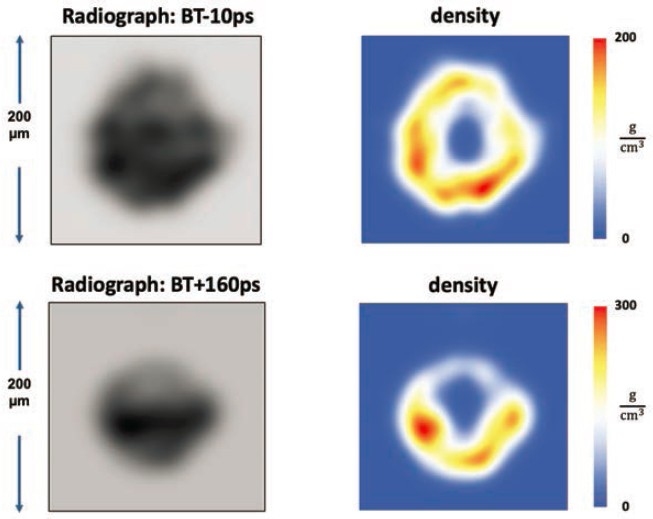
To better understand such hydrodynamic instabilities, imaging of the evolution of materials in the mixing region is required. This imaging could be accomplished with the high-repetition-rate, bright X-ray sources currently only available at the LCLS. A proposed upgrade at the Matter at Extreme Conditions (MEC) end station at LCLS would add high repetition rate petawatt class and long pulse drive lasers. This would complement the ongoing upgrade of LCLS to a 25 keV X-ray free electron laser (FEL) beam. If the proposed upgrade is implemented, the improved facility would enable a significant step forward in understanding hydrodynamic instabilities in HED plasmas, and in fundamental processes of HEDP and ICF such as new superconducting and quantum materials and dynamic phase transitions. Co-location of coherent and/or brilliant mono-energetic X-ray sources, produced using conventional or new plasma based methods, with midscale or NIF or Z-machine scale facilities would enable significant advances in imaging these fundamental processes.
Matter-Electromagnetic Coupling
While the plasma physics relevant to breakdown of a plasma in an intense electric field does not occur in the HED regime, the process is central to understanding, predicting, and designing the next generation of pulsed power machines. A higher priority must be placed on electromagnetic field-matter coupling throughout the HED community in order to better understand the low-density plasmas and plasma breakdown in pulsed power machines. These processes include the study of intense electric and magnetic fields in vacuum interacting with dense metal and dielectric surfaces as well as bulk materials. Such a fundamentals focused program would include the development of new models and computational algorithms that are capable of handling the multiscale physics encountered as electric and magnetic fields terminate abruptly across very steep density gradients (such as across a vacuum-metal or vacuum-plasma interface).
A need that transcends plasma physics in general, and not limited to HED regime, is an improved understanding of plasma emissions. All plasmas produce and absorb radiation in some manner, and those processes can dominate power transfer. This is another example of where advances in understanding fundamental processes in HEDP are closely linked to AMOP to provide the needed data for modeling and interpreting diagnostics. In the HED and WDM regimes, methods developed in the condensed matter community are able to predict spectral structure appropriate to high plasma densities and low temperatures. However, these methods are not likely to be applicable to the WDM regime now being produced using X-ray free-electron lasers (XFELs). The critical need for consistency between the fundamental data and the resulting plasma transport is highlighted by model discrepancies with experiments in the quasi-continuum of the L-shell iron opacity. This inconsistency may be the result of a weakness in the theory (e.g., continuum
resonances in partially bound states) or another as yet not understood atomic processes acting within a plasma environment. A multilaboratory effort was launched to reproduce the results on the NIF to address the discrepancy. Resolving this opacity inconsistency by refining our understanding of this fundamental matter-field coupling will impact not just HED plasmas but also the astrophysical problem of stellar structure. (See Figure 4.11.)
Opportunities to leverage the many linkages between HED plasma physics and other branches of physics will continue. For example, high-energy-density plasmas can produce, via nuclear fusion reactions, significant yields of MeV neutrons, protons, and other ions, and facilitate the ponderomotive acceleration of protons and light ions in laser-irradiated foils, as well as electron wakefield acceleration. These accelerated particles can be used to initiate reactions in a range of nuclear physics experiments.
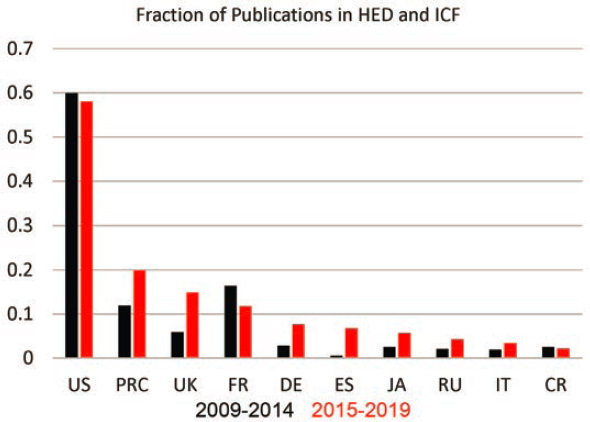
Stellar interiors and stagnated ICF targets share unique conditions perhaps not found elsewhere. Nuclei in stellar interiors are immersed in a degenerate electron continuum whereas nuclei in conventional matter are surrounded by bound electrons. These differences can significantly affect the screening of nuclear interactions triggered by charged particles. HED plasmas can populate low-lying excited nuclear states, which, in turn, would affect the neutron-induced reaction rates. The physical similarity between the stellar interior conditions and the laboratory HED plasma environments opens new opportunities for experiments relevant both for nuclear physics and astrophysics.
THE U.S. ROLE IN THE INTERNATIONAL HED PHYSICS AND ICF FIELDS
The United States is the international leader in HED research by many metrics, including the number of publications. Over the last 5 years, 50 percent of publications in HED are attributed to the United States. (See Figure 4.12 and Figure 4.13.) The next largest contribution is from the People’s Republic of China (PRC) with about 15 percent of the publications. However, there are interesting trends in the publication statistics for HED research.
- High impact journal publications in the HED field are more likely to be international collaborations. About 60 percent of the publications during 2018-2019 were multinational collaborations. Although this is a from a fairly small sample size, it is clear that international collaborations are vital to producing high-impact work in HED physics.
- Over the last 5 years the number of non-U.S. publications in HED has risen faster than the number of U.S. publications. In 2009-2014, the number of publications with U.S. authors was about 62 percent of the total, compared with the 50 percent during 2014-2019. The largest increase has been by authors from European countries, with France rising from 10 to 15 percent of the total, Germany rising from 9 to 13 percent, and Russia increasing from 7 to 10 percent. The number of publications in this time increased from 167 to 316 in the Web of Science analysis. Many of the new publications are tied to high-intensity, short pulse lasers, where the United States has not maintained its original lead in facilities (as described in the 2018 report Opportunities in Intense Ultra-Fast Lasers: Reaching for the Brightest Light; hereafter the “Brightest Light report”).6
___________________
6 National Academies of Sciences, Engineering, and Medicine, 201,. Opportunities in Intense Ultrafast Lasers: Reaching for the Brightest Light, The National Academies Press. Washington, DC, https://doi.org/10.17226/24939.
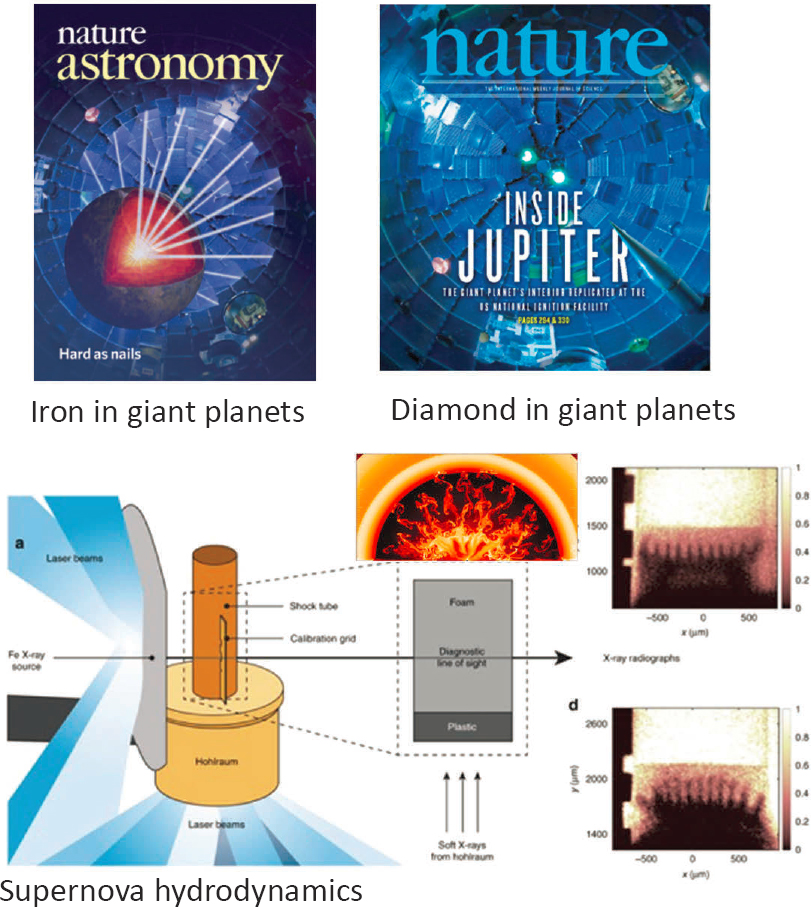
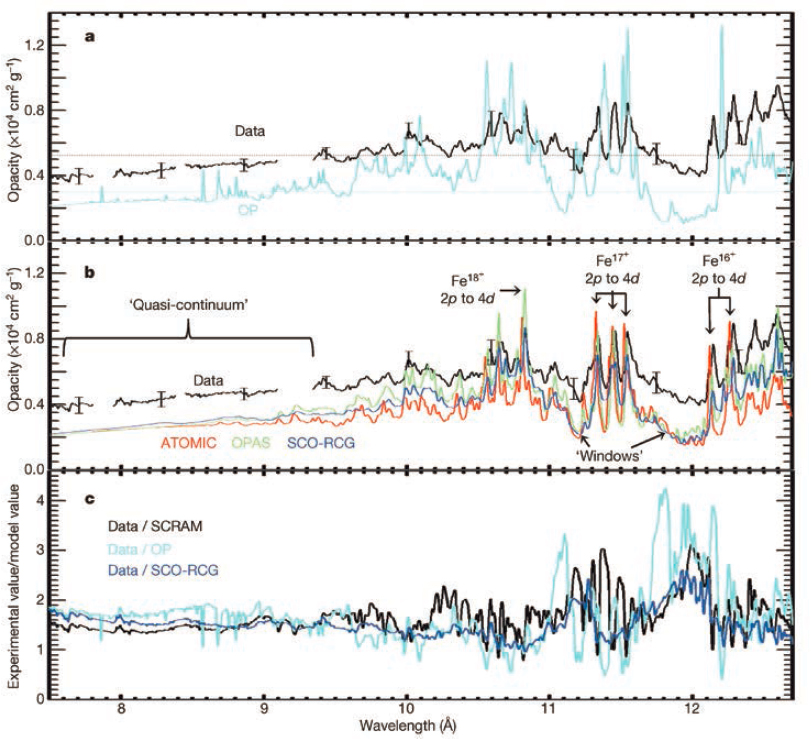
Many international collaborations are in progress at the large U.S. facilities. For example, in the National Laser User Facility (NLUF) program to use the Omega laser at LLE, all proposals must have a U.S. principal investigator (PI). Of those investigators, ~50 percent have international collaborators and ~25 percent have multiple international collaborators. In NIF’s Discovery Science program, 2 of the 10 proposals approved in 2019 have a non-U.S. PI and three others are multinational
collaborations. Although the United States is an international leader in certain aspects of HED facilities (e.g., NIF, Z-machine), that is not the case across the spectrum of HED and WDM physics. Experiments that require single or multiple beams of ultrafast multi-PW (10 PW-scale) lasers for advanced laser plasma-based particle acceleration or study of collective plasma effects with extreme fields must be performed outside the United States. As noted in the Brightest Light report, the United States is falling behind both Europe and Asia in PW laser capabilities.
HED FACILITIES AND MAJOR PROGRAMS
The largest HED/ICF facility is the National Ignition Facility (NIF), which came online in 2009. The 192 beams of NIF routinely deliver 1.8 MJ of laser energy at a peak power of 500 TW at a wavelength of 0.351 µm. In 2018, in support of a milestone to reach 2.1 MJ, NIF delivered 2.15 MJ. Currently there are about 60 diagnostic instruments. Depending on the complexity of the shot, one shot is fired about every eight hours. NIF currently produces 400 shots/year (although some of these are facility shots rather than for physics experiments).
The Discovery Science program at NIF allocates about 8 percent of the shots to investigators to conduct fundamental HED experiments that are not necessarily closely aligned with the NNSA mission. These shots are awarded through a competitive proposal process. In the last call, there were 25 proposals, of which 10 were selected. (See Figure 4.14.) Typically, a Discovery Science proposal is awarded 1-3 days of shot time.
The Laboratory for Laser Energetics (LLE) at the University of Rochester is home to both the Omega laser and the Omega EP laser. Omega is a 60-beam Nd:glass laser, operating since 1995, routinely delivering 30 kJ at a peak power of 100 TW at a wavelength of 0.351 µm. Omega EP, completed in 2008, has four NIF-like beams. These deliver, as on NIF, about 10 kJ at 0.351 µm, or, after compression and expansion, in a short pulse mode with a peak power ~1 PW at a wavelength of 1.05 μm. The two lasers beams may be propagated to the same target chamber for experiments requiring both high energy, uniform illumination and short pulse, high intensity illumination. About 35-40 percent of the shot time is allocated to ignition, 30-35 percent to HED studies, and 25-30 percent to fundamental science. The fundamental science allocation is divided between the Laboratory Basic Science program (for LANL, LLNL, NRL, SNL, and LLE scientists) and the NLUF program for scientists from academia or industry. Many diagnostics designed for the NIF are first fielded and demonstrated on Omega.
The Z-machine at Sandia National Laboratory can deliver over 2 MJ of radiation with a spectrum that is comparable to that of the interior of the Sun. The Z-machine produces currents exceeding 26 MA in 100 ns to 1 µs long pulses and voltages exceeding 5 MV. High currents also allow the Z-machine to generate up
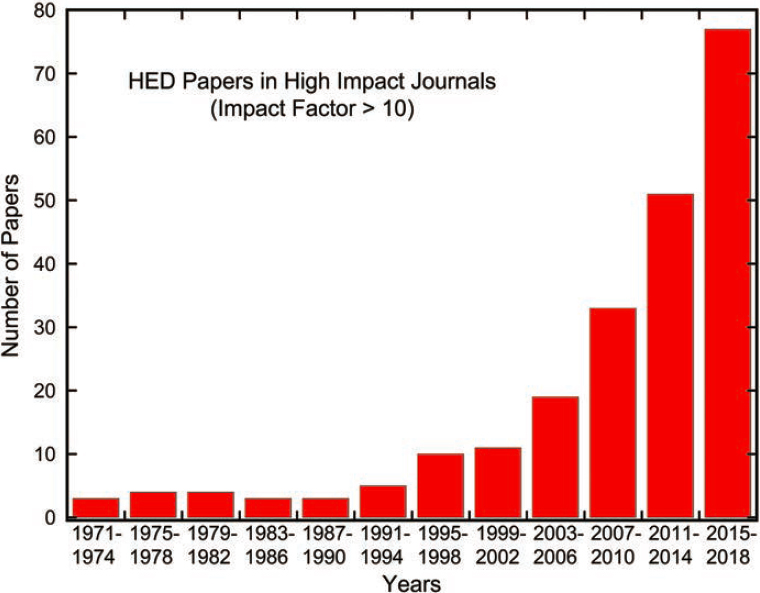
to 8 Mbar (million atmospheres) pressure from magnetic fields, and flyer plate velocities exceeding 40 km/s. Work on Z-machine is funded by NNSA for defense and related applications. These include producing intense UV and X-ray radiation for a variety of applications, intense magnetic fields and pressures for dynamic materials properties measurements, ICF research, stockpile stewardship, and the creation of extreme environments for astronomy experiments. Like LLNL and LLE, SNL supports use of the Z-machine by the broader science community for fundamental basic science experiments. This program is the Z Fundamental Science Program (ZFSP). The first call for proposals under the ZFSP was in 2010. A second call for proposals was issued in 2017, and 10 teams from 9 institutions
were awarded time. A third call was issued June 17, 2019. The ZFSP has executed 107 shots on the Z-machine since 2010. The scientific impact of the program has been notable with many publications in high-impact journals.
The Linear Coherent Light Source (LCLS) at SLAC National Accelerator Laboratory began operation in 2009. Since coming online in 2010, the Matter in Extreme Conditions (MEC) end-station at LCLS has been a state-of-the-art user facility for studying LPIs, warm dense matter, and dense material physics. Its ability to diagnose wide-angle X-ray scattering of the LCLS source enables the entire angular distribution of scattering vectors to be captured in a single shot. This capability has produced new insights into the atomic structure of materials in compressed or heated states while the material is dynamically evolving.
In addition to these major, world class HED facilities there are many midscale facilities in the United States. One of the recommendations for HED science from the Plasma 2010 report was that midscale facilities needed to be maintained, expanded, and utilized as effectively as possible. Table 4.1 describes the high intensity laser facilities, many of which are linked through LaserNetUS.
LaserNetUS is an advance in support for users of midscale, high-intensity laser facilities. LaserNetUS was established in August 2018 to help restore U.S. dominance in high-intensity laser research, and to specifically address some of the recommendations of the Brightest Light report. The report recommended that the DOE create a broad network of lasers to support the science, applications and technology of intense, ultrafast lasers. LaserNetUS is intended to provide institutions and single scientists access to PW-class laser systems. Most facilities enable active participation by the users and so provide an ideal training ground for students and early career scientists in state-of-the-art laser technology. Given its short operating record at the time of this report, its long-term effectiveness cannot yet be assessed. However, in 2019 LaserNetUS provided experimental access to 200 researchers from dozens of institutions in the United States and abroad. An important role fulfilled by LaserNetUS is the training of students and postdoctoral researchers. Well over 100 students and postdoctoral researchers have already participated in LaserNetUS experiments.
There are several small scale (1-3 MA) pulsed power facilities at U.S. universities. However, these generally do not meet the requirement of midscale facilities accessible to users, (with capability between 1 MA and 20 MA). (See Figure 4.15.) These facilities are summarized in Table 4.2. Several of the university pulsed power systems are used for technology development and not HED/ICF experiments. There is no equivalent to LaserNetUS for pulsed-power facilities. Recently formed ZNetUS, an association of HEDP research scientists in academia, national laboratories, and industry, held their first workshop in January 2020. In this workshop and subsequent meetings, they concluded that there is an urgent need for a mid-sized facility (5-10 MA), which will enable addressing critical science questions
TABLE 4.1 U.S. MidScale Laser Facilities
| Location | Laser | Properties |
|---|---|---|
| Colorado State University* | Advanced Beam Laboratory | Petawatt class, femtosecond pulses, intensities 0.6-1022 W/cm2 |
| Lawrence Berkeley National Laboratory (LBNL)* | Berkeley Lab Laser Accelerator (BELLA) |
Dual beam
|
| Lawrence Livermore National Laboratory (LLNL), Jupiter Laser Facility* | Janus | Dual beam, 1-15 ns, ~1 kJ |
| Titan | Dual beam, one Janus beam and one short pulse (0.7-40 fs), 1019-1020 W/cm2 | |
| Comet | 0.5 ps to 2 ns, 10 J | |
| Naval Research Laboratory | Nike | 248 nm, 4-5 kJ, 4 ns |
| Electra | 193 nm, 700 J, 1-5 Hz, 50 ns | |
| Ohio State University* | Scarlet | 30 fs, 10 J, 5 × 1021 W/cm2 |
| SLAC National Accelerator Laboratory, Linac Coherent Light Source (LCLS)* | Matter at Extreme Conditions (MEC) (laser only) | 10 ns, 60 J 50 fs, 5 J |
| University of Michigan, Center for Ultrafast Optical Science (CUOS)* | Hercules | 30 fs, 300 TW, 1e22 W/cm2 |
| T-cubed Laser (TTT)* | 400 fs, 8J, 3e19 W/cm2 | |
| University of Nebraska, Extreme Light Laboratory* | Diocles | 0.2-0.7 PW, 0.1 Hz |
| Diocles HRR | 100 TW at 10 Hz | |
| Archimedes | 10 TW at 10 Hz | |
| University of Rochester, Laboratory for Laser Energetics (LLE)* | Omega EP | Short pulse—2 beams 0.7-100 ps, 0.5-2.3 kJ Long pulse—2 beams, 5 kJ/beam, ns pulses |
| University of Texas at Austin, Center for High Energy Density Science* | Texas Petawatt Laser | 140 J at 140 fs, 2 × 1022 W/cm2 |
* = Member of LasernetUS.
needing capabilities between existing 1 MA devices at universities and the 26 MA Z-Machine at SNL.
The availability of midscale pulsed power facilities is clearly less than that for midscale laser facilities. As described above, a Next Generation Pulsed Power Facility (NGPPF) based on improved linear transformer driver (LTD) technology is a leading candidate to replace today’s Z-machine, which uses the older, more mature but less efficient Marx generator/water pulse-forming lines technology. The LTD technology offers an opportunity to address the dearth of midscale facilities, providing a lower cost path to achieving significantly higher pulsed power performance. Midscale facilities (5-15 MA) could be built with LTDs to provide facilities for investigating HEDP and technology concepts in the gap between the majority of university facilities and national laboratory facilities. The LaserNetUS concept
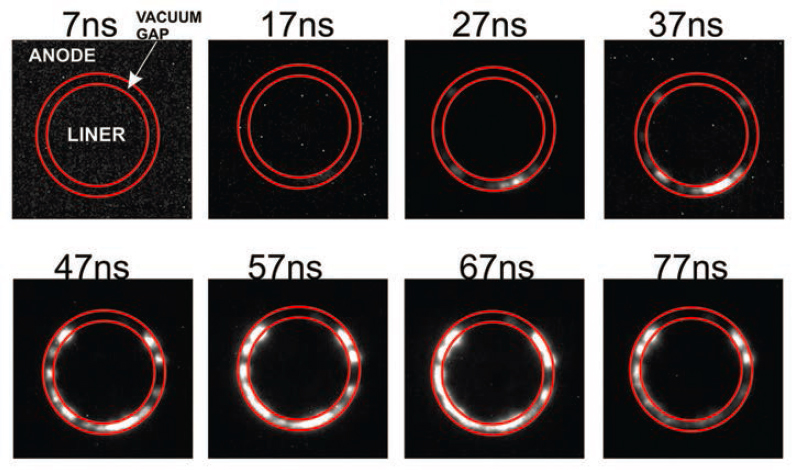
has been embraced by the pulsed power community. At community forums held for this report, a similar network for access to midscale pulsed power facilities was proposed on several occasions.
The next generation of large-scale facilities should be able to achieve high gain in order to further both IFE and stockpile stewardship goals. It is now premature to select one type of driver over another. What is clear is that fundamental research on the science and technology of new pulsed power and laser drives must be sustained so that wise choices can be made in defining the next generation large facilities. The current low level of support for midscale pulsed power facilities with access to university researchers works against having a robust community developing a diversity of options for the next ICF facility.
TABLE 4.2 Small-Scale Pulsed Power Facilities
| Location | Facility | Properties |
|---|---|---|
| Cornell University | COBRA | 1 MA Marx-pulse forming line |
| Naval Research Laboratorya | Hawk | 800 kA Marx |
| Mercury | 300 kA Insulated Voltage Adder (IVA) | |
| Sandia National Laboratorya | Mykonos | 1 MA, 5-cavity LTD |
| University of California, San Diego | GenASIS | 250 kA LTD |
| University of California, San Diego | LTD-III | ~1 MA LTD |
| University of Michigan | MAIZE | 100 ns, 1-MA single cavity LTD |
| BLUE | 150 kA, 4 cavity LTD | |
| University of Nevada, Reno | Zebra | 1 MA Marx-pulse forming line |
| University of New Mexico | LOBO | 200 kA LTD |
| University of Rochester | HADES | ~1 MA, 6-cavity LTD |
| University of Washington | ZaP-HD | 450 kA, 1-2 Tesla, 30-70 µs |
| FuZE | 200 kA, 1-9 Tesla, 20-40 µs |
a While the NRL Hawk and Mercury, and the SNL Mykonos machines, are not user facilities, scientists from outside NRL and SNL collaborate in many of the research projects on these machines.
NOTE: LTD = linear transformer drive, Marx = Marx Bank.
There are three existing or planned NIF-class laser facilities outside the United States. The Laser Megajoule (LMJ) in France currently has 40 NIF-like beams, eventually to be 176. (See Figure 4.16.) It is intended to provide about 1.4 MJ at 351 nm wavelength. Like NIF, it has a petawatt-class laser (PETAL, currently 1 kJ at 570 fs, eventually reaching 3.5 kJ at 10 ps) that is integrated with the longer pulse drive beams and can be used for high-energy backlighting and HED experiments. It is configured much like NIF, with beams oriented for indirect laser drive (in a cylindrical geometry rather than uniformly distributed around a sphere). The current hohlraum design is a rounded cylindrical (“rugby”) shape, rather than the right circular cylinder used on NIF. LMJ and PETAL are available for national and international collaborations through the Institute Lasers and Plasmas. Six experiments were selected from the first two calls. Three have been fielded (in 2017, 2019, and 2020) using PETAL, 56 LMJ beams, and 16 diagnostics.
A second currently operating major facility is the Shenguang III laser in China. (See Figure 4.17.) With 48 beams, it is designed to have a maximum energy of 180 kJ at 351 nm wavelength. It too uses a hohlraum to drive a capsule for ICF studies, but there are multiple hohlraum designs being explored. These include spherical hohlraums and a novel “TACH” shape, shown in Figure 4.18. This design uses only laser beams incident at large (~50 degrees) angles. This larger angle of incidence
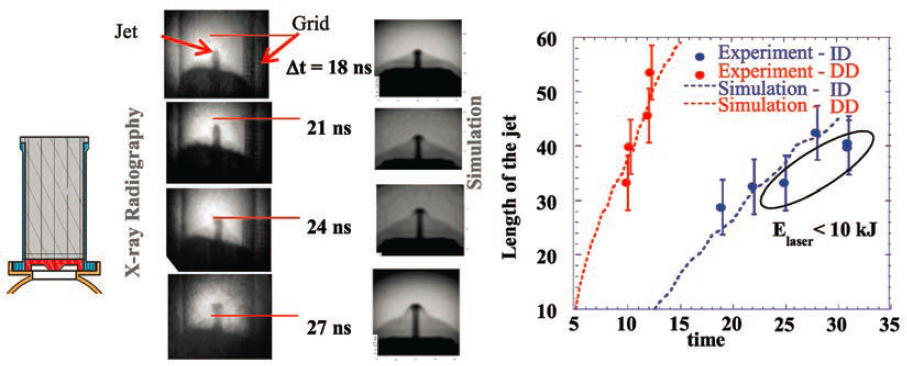
is predicted to reduce backscatter, crossed-beam energy transfer, and symmetry degradations due to expanding hohlraum walls, all of which result in implosion degradations seen on NIF experiments.
The third international NIF-class laser is under construction—the UFL-2M laser in Russia. It is designed to have 192 beams (the same as NIF) but will irradiate the target at 531 nm instead of the 351 nm used by NIF and LMJ. Due to the more efficient frequency conversion of the Nd:glass produced 1053 nm to 531 nm. and higher damage threshold for optics at the longer wavelength, its energy is designed to reach 2.8 MJ. The irradiation geometry is spherically rather than cylindrically symmetric, in order to optimize the symmetry for laser direct drive.
As described in the 2018 Brightest Light report, most of the high-intensity lasers in the world have been (or are being) built outside the United States. It is now the case that U.S. scientists studying HED at very high electric field strengths (for example, nonperturbative quantum electrodynamics effects) are not able to perform research in the United States.
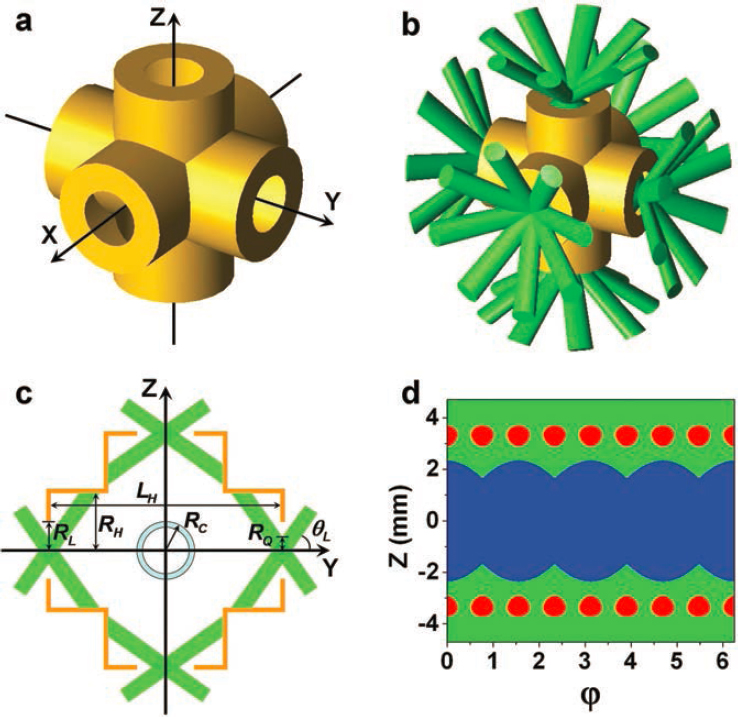
Major pulsed power facilities outside the United States are beginning to compete with U.S. capabilities. The Primary Test Stand in China (PTS), currently operating, is an 8 MA, 8 MJ Z-pinch facility (about 1/3 the power and energy of Sandia’s Z-machine). Similar to the Z-machine, the PTS has a 1 kJ laser for backlighting experiments. It is an important part of the Chinese Academy of Engineering Physics
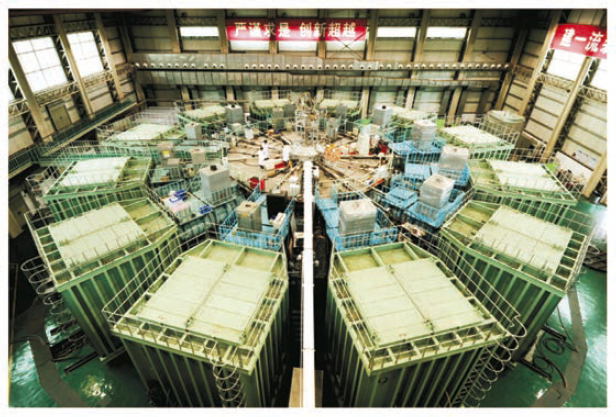
roadmap for Z-pinch fusion. The proposed Baikal facility in Russia is intended to be a 50 MA, 100 MJ Z-pinch machine, or nearly 4 times the energy of the current Sandia Z-machine. Baikal has a stated goal of 25 MJ Z-pinch fusion energy. Approximately 5 years ago, however, this project was postponed due to funding issues.
RELATIONS TO AND PERSPECTIVES OF INDUSTRY
In the Brightest Light report, possible industrial applications of ultrafast lasers were described, with a focus on medical applications. In order to understand, predict, and improve these possible applications, the HED physics of the interactions of the high-intensity lasers with their targets must be better understood. While materials processing with ultra-intense lasers is already employed in manufacturing processes, the plasmas produced are typically not in the HED regime. The goal of the process is usually to affect a small volume of a solid material (without, for example, creating shocks and cracks). However, in many other applications the goal is to produce a brightly radiating plasma, or to accelerate particles to high energy. In this case the plasmas would likely be in the HED regime. Summarized here are some of the possible industrial and medical applications of intense lasers,
described in more detail in the Brightest Light report, where HED plasma physics understanding plays a role.
- Ultrafast X-ray radiography in medicine and industry. Ultra-intense (typically petawatt-class lasers) are used to produce bright X-ray backlighters as described in Chapter 3 and have great utility for performing radiography of imploding ICF capsules. These bright sources have been demonstrated to produce high resolution and high contrast images, with the potential to allow 3D reconstruction of images, as shown in Figure 4.19. The sources are sufficiently coherent to create enhanced signals around
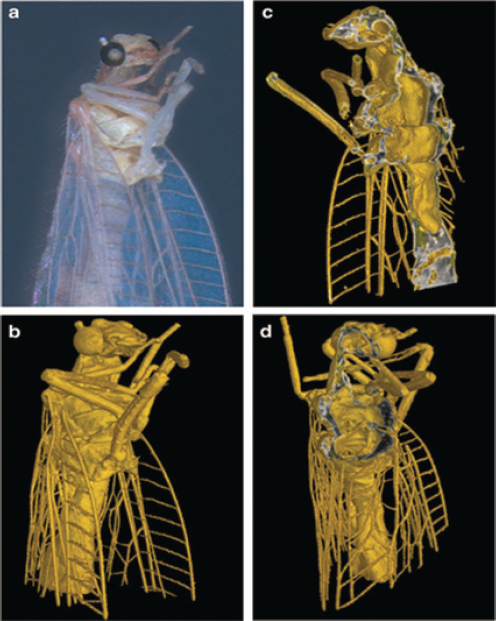
-
discontinuities (phase contrast imaging), allowing discrimination of various tissues (or other samples). This is not a feature of radiation from conventional medical X-ray sources from X-ray tubes. Simulation capabilities to quantitatively predict the X-ray characteristics of such sources would aid in optimizing and designing these sources.
- Electron beams for cancer therapy. As described in Chapter 3, intense lasers may be used to accelerate particles. High-energy electrons, whether from cyclotrons, linear accelerators, or lasers, may be a better choice for tumor therapy than X rays, as they are more easily focused and targeted on the tumor. High energy ions also have advantages over X-ray therapy, particularly the ability to minimize damage to surrounding tissue. Laser-based accelerators may offer cheaper, smaller electron sources than other options.
- Laser-produced isotopes for positron emission tomography. PET requires positron-emitting radioactive sources. Production of the positron-emitting isotope 11C was estimated to be 4200 kBq (on the LLNL Titan laser) via the 10B(d, n)11C reaction, with an illumination intensity of 9 × 1019 W/cm2. However, this is still much less than the required 800 MBq for PET. Higher repetition rate lasers such as ELI at 10 Hz will clearly be a large step toward feasible production of PET isotopes.
These possible applications all have documented proof-of-principle experiments, as described in many references in the Brightest Light report and may be ready for implementation over the next decade.
The field of high energy density physics is not limited to national laboratories and large companies. The High Energy Density Science Association (HEDSA) was founded in 2005 to enable academic and small business high energy density researchers to advocate for HED physics research. HEDSA facilitates increased communication and collaboration between smaller research programs and businesses and larger ones. Most of the small business members of HEDSA focus on software activities, including experimental design, plasma simulation, and computational physics.
In addition, large companies are closely involved in supporting HED/ICF experiments. General Atomics, for example, conducts research and development in ICF/HED targets, and supplies a significant fraction of targets at the major ICF/HED facilities in the United States.
FINDINGS AND RECOMMENDATIONS
HED is a field with broad, cross-cutting applications in plasma physics. The field has flourished for the past 10 years. There are numerous results from many institutions and facilities that have had a large impact. The emergence of new major
facilities has greatly expanded HED capabilities and has resulted in significant data for stockpile stewardship and national security. The ICF community is (and should continue to be) pursuing multiple options for inertial confinement fusion, including direct magnetic drive, direct laser drive, and indirect laser drive. In the last decade, major facilities have made important contributions to all approaches. There is now greatly improved understanding of the physics required for ignition due to experiments performed on the NIF, even without ignition.
Finding: Innovative diagnostics and diagnostic techniques have enabled developing a detailed picture of ICF plasmas and imploded target cores with unprecedented precision, and enabled the investigation of HED matter at previously unattainable conditions.
Finding: Diagnostic innovation is an ongoing need.
Finding: While significant progress in HED science has been made in the last decade, more advances are needed to improve predictive capability.
Recommendation: The DOE-NNSA, DOE-FES, and NSF-MPS should increase resources for development of new diagnostics and analysis methodologies to address needs for ongoing innovation in high energy density physics.
Recommendation: The current National Nuclear Security Administration (NNSA) Inertial Confinement Fusion (ICF) National Diagnostics Working Group charter and workshops should be expanded to explicitly include high energy density diagnostics, interaction with midscale facilities, and data analysis and data mining techniques.
There exist opportunities to improve the fundamental science basis in plasma simulation codes, as well as to incorporate uncertainty quantification and machine learning techniques. The understanding of laser-plasma instabilities and their mitigation, and incorporation of the physics of laser-plasma instabilities into simulations, will benefit HEDP and all approaches to ICF.
Finding: Improving our understanding of laser-plasma instabilities is essential for continued progress toward validated predictive capabilities, which are necessary for ignition and gain.
Recommendation: To achieve the goal of ignition and improve the quality of high energy density science, DOE-NNSA, DOE-FES, and NSF-MPS should
expand and strengthen numerical simulation capability, focusing in particular on improved atomic and kinetic modeling (including equation of state), improved radiation transfer (including opacity), improved laser-plasma instabilities understanding, uncertainty quantification, and machine learning.
Recommendation: Where possible the National Laboratories should contribute their unclassified state-of-the-art simulations codes to collaborations with academic and commercial efforts, and support training of qualified users.
Finding: Federal support of HED sciences at universities is essential to the health of HED science.
The university centers established by federal funding have seeded growth in HEDP at universities, have been instrumental in achieving the current vibrant state of the field and in providing the needed workforce for federal priorities.
Finding: The current paucity of midscale pulsed power facilities is a potential danger for the field.
Recommendation: Federal support of high energy density (HED) physics at universities and midscale laser facilities should continue to expand, not only to benefit HED physics but also to maintain the critically needed HED workforce.
Recommendation: Midscale pulsed-power facilities accessible to universities should be established, with leadership of these new facilities drawn from university researchers and the national laboratories.
Finding: The basic science programs at NIF, Omega, and Z-machine have resulted in significant scientific results despite having a small fraction of the available facility time.
Finding: The high visibility of these basic science HED experiments increases the ability to recruit new talent while improving the understanding of the universe and the science underpinnings of other HED/ICF research.
Finding: Guidance is required for how best to leverage and expand the basic science programs. This guidance could come from a new HEDP Basic Research Needs report.
Recommendation: DOE-NNSA, DOE-FES, and NSF-MPS should continue and increase support for basic high energy density science programs at large facilities in collaboration with universities.
Recommendation: The science program direction and the appropriate level of funding and facility support should be guided by DOE-NNSA, DOE-FES and NSF-MPS collaboratively commissioning a new high energy density physics (HEDP) Basic Research Needs report for the HEDP community.















































